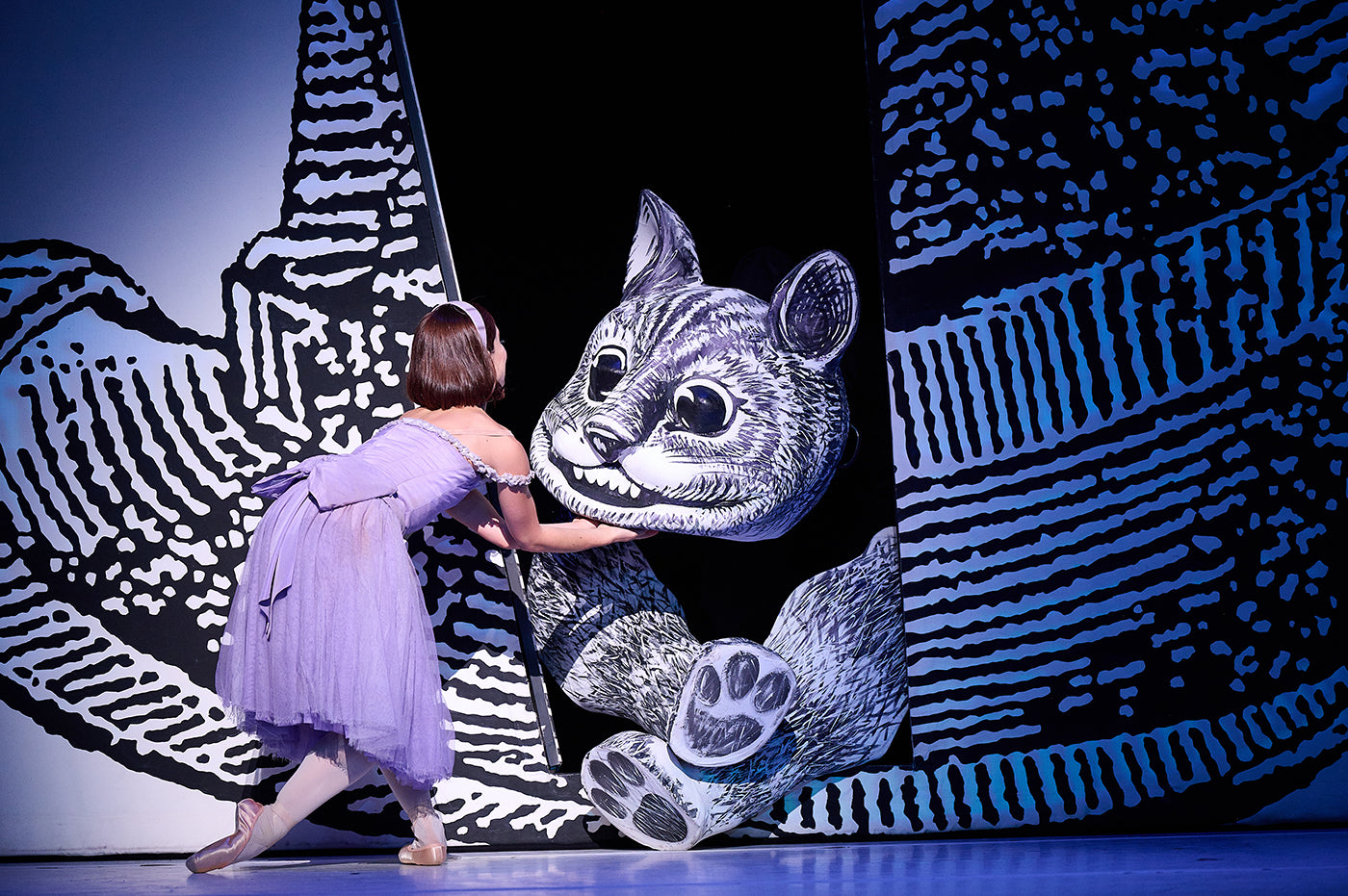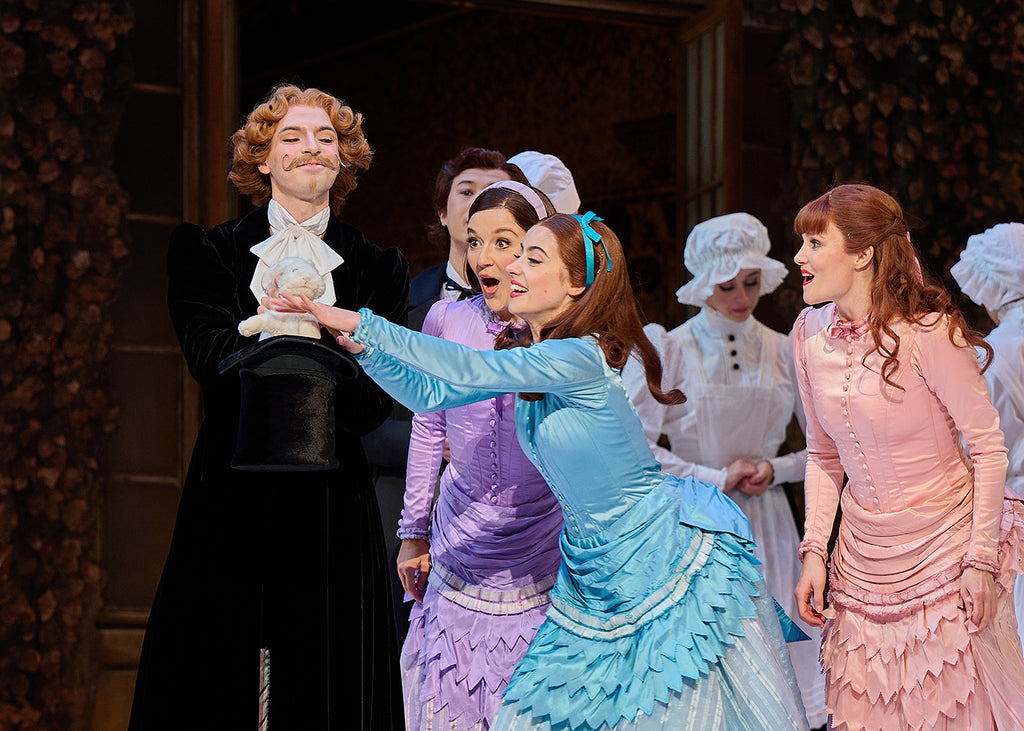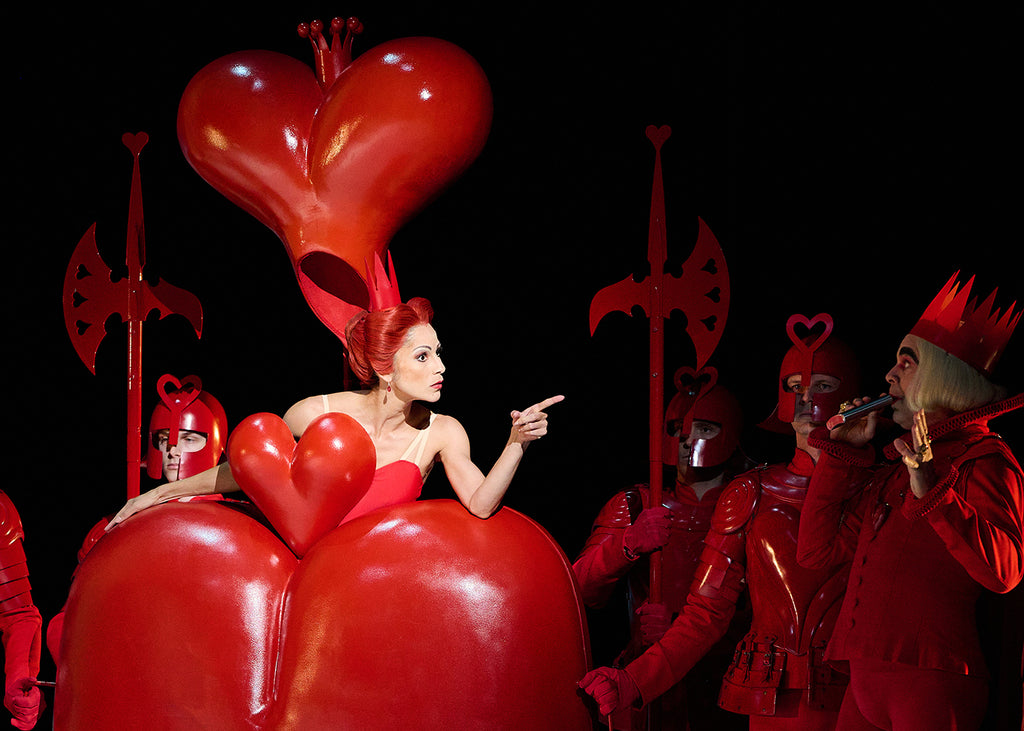Leaning upon a dodo for support, who finds the best way to explain a caucus race “is to do it”, so, too, a means to make a book of wordplay into a ballet: just do it, and in the doing, the story unfurls, for both are read, and both can spark imagination. Running about in a circle to dry off, the dodo soon proclaims: “EVERYBODY has won, and all must have prizes,” which is essentially how I feel about the perfectly ridiculous “Alice” where movements, like words, to borrow now from Carroll himself, mean more than we mean to express when we use them. Coincidentally, this race-over “Alice” is the last performance to grace the stage at the State Theatre, before it closes for a three-year refurbishment. But we’re not over yet.[2] No, we’ve only just begun.
Then and now, Wheeldon’s open-hearted, playful invitation to fall down the transformative burrow is one I willingly accept. Of course, there’s a Frog Croaking Guiro, in which a stroke of the back of the percussive instrument makes a series of croaks, in there! And just as Bemet explains that you need to lean into the comedy and find some peculiar physicality,[3] this is true of the role I am accepting in the audience. This time, I have the good fortune to see Jarryd Madden transform not just in the conventional magical narrative of from a gardener named Jack to a Knave on the run, but from a tapping Mad Hatter too; with Joseph Caley filling the gardener’s boots on the following night, and both Madden and Caley imbuing the role with grounded tenderness. Robyn Hendricks, who is also inhabiting the role of Alice this season, is on Tuesday night both Alice’s Mother and heart-entombed, precision-tanked Red Queen magnificence, with Ako Kondo also controlling and devouring the role the following night. Disappearing to reappear, Brett Chynoweth and Chengwu Guo split the part of Lewis Carroll in the gardens in 1862 and spring-footed, ever-alert White Rabbit with conviction more than fur deep, but to the marrow. Drew Hedditch assumes the role of Hatter, Tuesday, and sequined Fish air-swimming the following. Such things, though part of the regular course, seem to give a slippery toehold to the theatrical sense of a landscape always changing; where things look the same until they are not; where flamingos are mallets and hedgehogs are balls in a game of croquet, and Home Sweet Home belies a butcher’s block macabre; where a floral waltz hits woozy notes of off-centred hallucinogenic states.[4]











comments